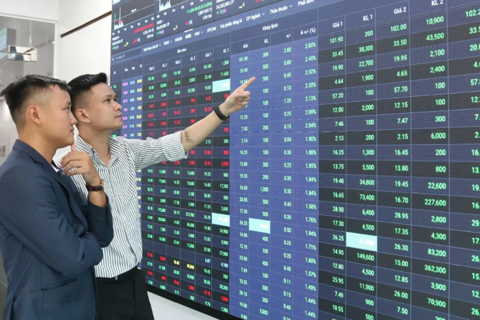Vietnam set to have digital banks within financial centers
Credit institutions headquartered in these financial centers will not be bound by restrictions on to foreign ownership or foreign investment conditions when providing services there or across borders.
The Ministry of Planning and Investment (MPI) has proposed establishing a digital banking model within Vietnam's financial centers starting in early 2026.
| A customer at the HDBank Branch in Hanoi. Photo: HDBank |
A draft resolution by the National Assembly on the establishment and operation of financial centers in Vietnam proposes the creation of digital banks by member banks of these financial centers, with implementation set to begin in 2026. In response, the State Bank of Vietnam (SBV) has recommended that this timeline be pushed back to early 2027.
However, the MPI, which is responsible for drafting the resolution, insists on maintaining the original timetable, arguing that it ensures the consistent application of policies necessary for the development of financial centers.
The draft also provides that credit institutions headquartered in these financial centers will not be bound by restrictions on foreign ownership or foreign investment conditions when providing services there or across borders.
For its part, the SBV argues that foreign ownership ratios and investment conditions for services provided in financial centers are directly linked to Vietnam’s trade and investment commitments. Therefore, removing such restrictions without a thorough review could risk violating Vietnam’s obligations under various trade and investment agreements.
Another provision in the draft outlines the roadmap for implementing international banking standards (Basel III) in these financial centers, which will begin in early 2026.
Basel III is designed to strengthen banks' capital adequacy, leverage, and liquidity requirements to prevent financial crises. It requires banks to hold higher-quality capital, limit excessive risk-taking, and maintain sufficient liquidity to withstand financial stress.
The central bank disagrees with this timeline, stating that the adoption of international banking standards should be aligned with the broader schedule currently being developed for commercial banks and foreign bank branches in Vietnam. The SBV proposes to delegate the authority to set this roadmap to the government and allow the State Bank to issue detailed guidance through decrees and circulars for greater flexibility.
Nevertheless, the MPI continues to push for the original timeline, emphasizing that the financial centers will operate under a distinct regulatory framework separate from the country’s general policies.
Earlier, the government had issued a resolution to establish a comprehensive international financial center in Ho Chi Minh City and a regional financial center in Danang. These initiatives aim to position Vietnam as a major financial hub in the region and globally.
According to the government’s plan, the financial centers in Ho Chi Minh City and Danang are expected to be established and operational this year.











